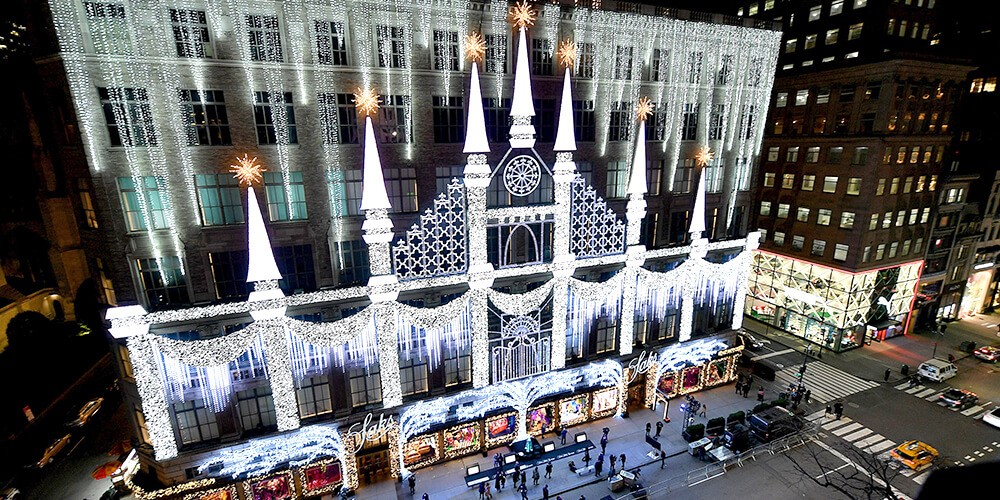
Five takeaways from Retail’s Big Show – Chapter 1
The National Retail Federation has just concluded the first instalment of Retail’s Big Show for 2021, and this year the event looked very different to years gone by.
Held virtually, the show was divided into two ‘chapters’, with the first held in January and the second to commence in June.
Despite its online venue, the event packed all the punch of previous years with a specific focus on the immediate needs facing retailers today and featured curated sessions, networking programmes and a virtual expo.
With its focus on moving forward together as an industry, here are five takeaways from Chapter 1 of Retail’s Big Show.
The future pulled forward
In a session on ‘Technologies Shaping the Store of 2025’, panellists noted the pandemic had “pulled the future forward”, accelerating adoption of e-commerce.
However, consumers still want curation, personal guidance and authentic connection, regardless of how they shop.
“In the world of commerce, the things we thought we would see in 2030 are now things that we’re seeing today,” Shopify director of product, retail, Arpan Podduturi, explained.
Meanwhile, head of global retail operations at Allbirds, Travis Boyce, noted the role of bricks and mortar was transforming into a hub where shoppers could fulfil needs like buying online and returning in store or engage in events as retail and communities begin to open back up.
It’s all about the show

Luxury retailer Saks Fifth Avenue was among the stores represented in a chat focused on re-imagining retail, with CEO Marc Metrick also agreeing the events of2020 had provided an accelerant for change.
However, he also added that in the case of luxury bricks and mortar retail physical stores continue to be important.
“For luxury, especially, it’s the theatre: People want to see the show,” he said, and since Saks reopened its stores, they have been performing only slightly below 2019 levels.
Better catering to the product cycle
Another thing Saks observed in 2020 was that in the future they could better cater to the product cycle.
For example, their seasonal ranges usually arrive almost six months prior to the season beginning and then the shop needs to push the product. In 2020, stores were closed in the early half of the year and then reopened in May.
“When the customers arrived, guess what was in the stores? Summer product,” Mr Metrick said.
“It had been on the floors since February, but this was the first time they’d seen it. We didn’t have to push it or promote it. It just sold, because we were meeting the customer’s needs.”
The significance of sustainability

A session involving IKEA and H&M representatives looked at whether sustainable purchasing habits changed as a result of 2020.
After years of an increasing shift to more socially and environmentally aware purchasing, the customer’s commitment to ethical retailing was not impacted by COVID-19, both retailers noted.
However, their budget tended to be smaller and the product focus changed to align with the new normal. They also explained that Gen-Z continued to lead the socially conscious push and had a huge demand for information about products.
“Having grown up as digital natives they understand — maybe better than any preceding generation — how to access information,” H&M US sustainability manager Abigail Kammerzell noted.
“And they’re really demanding about it. They want to know where our clothing is made and out of what, what the social implications of that are, and what’s the responsibility of the consumer once they’re done with it.
“On top of that, Gen Z has definite expectations about what a business is: It’s not just here to provide an item, it’s also here to improve the society and community in which it operates.”
All round excellence
It’s not enough for a retailer to excel in one area, they need to be excellent all-rounders. That was the message from Wayfair CEO Niraj Shah, who noted what “you’re not good at limits your growth and being great in other areas doesn’t make up for it”.
As an online retailer focussed on furniture, Mr Shah explained for his company that involved a focus on both merchandising and logistics.
But most importantly it involved intimately understanding exactly what a customer needs, and then drawing on tools like technology to meet those requirements.
Lowe’s CEO Marvin Ellison agreed, explaining the true role of technology was to deliver a better customer experience.
“As we look to the future, we ask one single question: What is in the best interest of our customers?
“The most effective technology is a technology that no one sees. All the customer knows is that the transaction was easy. All the associates and supply people know is that the system works well.
“And that,” Mr Ellison said, “is what good innovation looks like.”
The first chapter of Retail’s Big Show ran over various dates from January 12 while the second chapter will commence in June. Further information about the event is available at the National Retail Federation.


